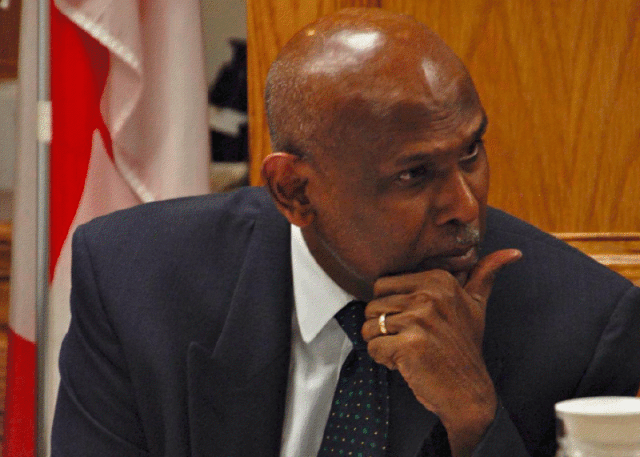Who is the CAO, what does he do, and what's his contract with Rossland?
The swimming pool controversy was sparked by a faulty process in which the CAO and the mayor neglected to consult council on important city matters, both strategic and financial, but now many Rosslanders are asking more fundamental questions, like “who is the CAO, what does he do, and what’s in his contract?”
Here we try and wrap up some of these questions, looking both at the general role of the “Chief Administrative Officer,” otherwise known as the municipal manager or city administrator, and the particular role of CAO Victor Kumar in Rossland.
First, some history. Today there are about 3700 municipal governments in Canada, but in 1785 there was only one: Saint John, NB. In 1849, the so-called Baldwin Act allowed municipalities to raise taxes and enact bylaws. Municipalities were created and controlled by provincial legislation, and receive no mention in the Canadian Constitution except to say they are a provincial responsibility.
By the early 1900s, municipalities had been reformed to be clearly distinct from the provincial legislatures, and local governments were likened to a board of directors running a business, as they are today.
Rossland was incorporated on March 18, 1897, the same day as Nelson. At that time, there were only 18 other municipalities in B.C.—including Kaslo (1893)—but others soon followed. Grand Forks and Greenwood incorporated later the same year, followed by Revelstoke in 1899, and Slocan and Trail in 1901.
In B.C. today, 161 municipalities are nested into 29 regional districts that provide municipal services to areas not incorporated into a municipality. Each municipality sends a director from council to sit on the regional district board beside other directors from the electoral areas. Typically a municipality will send the mayor, but for the past three years Coun. Kathy Wallace has been Rossland’s director for the Regional District of Kootenay Boundary.
About 68 municipalities have populations smaller than Rossland’s, while 59 have populations over 10,000, and 18 have populations over 50,000. The largest are Burnaby (200,000), Surrey (400,000), and Vancouver (600,000).
Despite this great diversity, municipal structures in B.C. are all remarkably similar, with a mayor and between four and 10 councillors tackling issues of policy, and a CAO tasked with administration. There are also CAOs at the regional level.
Although the function of policy making is formally council’s, and administration is formally the CAO’s, in practice the CAO makes policy recommendations to council, and councils often make administrative suggestions to the CAO.
The position of the CAO helps some councils, particularly in small municipalities like Rossland, to do away with the need for committees to administer specific functions of the municipality. Instead, the administrative duties are absorbed by the CAO, while the council acts as a “committee-of-the-whole” (COW) to receive reports from the CAO and other city officials and focus instead on policy debates. The COW makes recommendations for council—composed of the same people—to adopt as resolutions in separate, “regular” meetings.
It is council’s responsibility, as outlined in B.C.’s Community Charter, to act as the governing body of the municipality. The mayor is described explicitly as the “chief executive officer,” tasked with communicating information to council, and “to reflect the will of council” in directions he gives to municipal officers—including the CAO—to implement policies, programs, and council directives.
The Charter describes the CAO’s role in Section 147. The CAO’s “powers, duties, and functions” include “(a) overall management of the operations of the municipality; (b) ensuring that the policies, programs and other directions of the council are implemented;
(c) advising and informing the council on the operation and affairs of the municipality.”
When CAO Victor Kumar was hired in 2009, his contract stipulated that an additional feature of the Community Charter be invoked, namely section 154. Council passed the “delegation bylaw” in Kumar’s first meeting with council to fulfill this portion of the contract: “Council hereby delegates to the Chief Administrative Officer all of the powers, duties and functions of Council under s. 154 (l) (b) of the Community Charter to make agreements respecting the City’s activities, works or services…”
In practice, between standard CAO duties and delegated ones, this means Kumar has the power to “appoint, promote, discipline and dismiss all Department Heads, Supervisors and Employees of the Municipality,” to supervise, set contracts, and make recommendations to council for officers who are chosen by council, and to be the intermediary between all staff and council.
Furthermore, Kumar is entitled to obtain legal advice and representation for the city, and authorize settlements of claims. He supervises the preparation of council’s agendas. He is expected to “report to Council on any matter of importance to the City, Library, Police and any other related organizations.”
Perhaps the strongest delegated power is that Kumar may “authorize the use or budgeted purchase or sale of City facilities, equipment and services and authorize the awarding of contracts for budgeted items.” Furthermore he may “supervise the calling and awarding of tenders for the supply of materials, equipment, services or construction approved by Council in the budgets and financial plans of the City,” and “exercise whatever additional powers and discharge whatever additional duties and responsibilities Council from time to time may assign.”
In an interview with the Telegraph’s Andrew Zwicker in 2009, Kumar argued that these powers were necessary for him to run the “day to day” operations of council. The wording, furthermore, clearly limits spending to “budgeted items” and duties to those assigned by council.
Kumar’s five year contract began on Dec. 7, 2009, and expires on Dec. 6, 2014. If Kumar requests it before June 7, 2014, council can give Kumar a three year extension of his contract to Dec. 6, 2017.
The contract stipulates that “The Employee [Victor Kumar] shall diligently and faithfully serve the City, carry out its’ [sic] objectives, and protect its’ [sic] interest in all things.”
To that end, Kumar’s contract holds him to a “code of ethics” which, among other points, requires him to “not use confidential information for the personal profit of themselves or others, nor for the purpose of gaining promotion, nor shall he/she misuse public time in the pursuit of such objectives.” To avoid conflicts of interest, he is also required to “declare his/her direct or indirect interest in any enterprise, which proposes to transact business with his/her municipality.”
The contract also stipulates an annual “performance evaluation,” which is “structured jointly and mutually agreed” prior to Nov. 30 each year “to meet and jointly set goals and objectives which shall form the basis of performance evaluation of the coming year.” The contract adds that the Employee be given “reasonable time to correct his performance.”
Nevertheless, the contract is very difficult to terminate. Whether “for just cause” or otherwise, termination requires a two-thirds vote in council, as stipulated in the Community Charter. That’s five of seven council members if the table is full.
Furthermore, “The City shall indemnify the Employee against any claim for damages against the Employee arising out of the performance of his duties and, in addition, pay legal costs to defend actions in Court proceedings.” That means that Rossland taxpayers are on the hook for any court case in which Kumar must defend his actions as CAO, both for the legal fees and any financial “damages” levied.
If the city does not have “just cause” to terminate Kumar’s employment contract, he must be paid 18 months worth of “salary, group benefits, vehicle allowance, vacation and statutory holidays,” which is well over $200,000.
Kumar’s salary was contracted at $135,000 per year, plus an annual increase according to the British Columbia Cost of Living Index or 3%, whichever is higher. He also receives roughly $15,000 in group benefits, of which he is expected “to reimburse the employer [Rossland] a maximum of $15,000 annually for the cost of benefits.” Last year, after the $15,000 deduction, but before income tax and pension deductions, the CAO earned roughly $140,000.


























